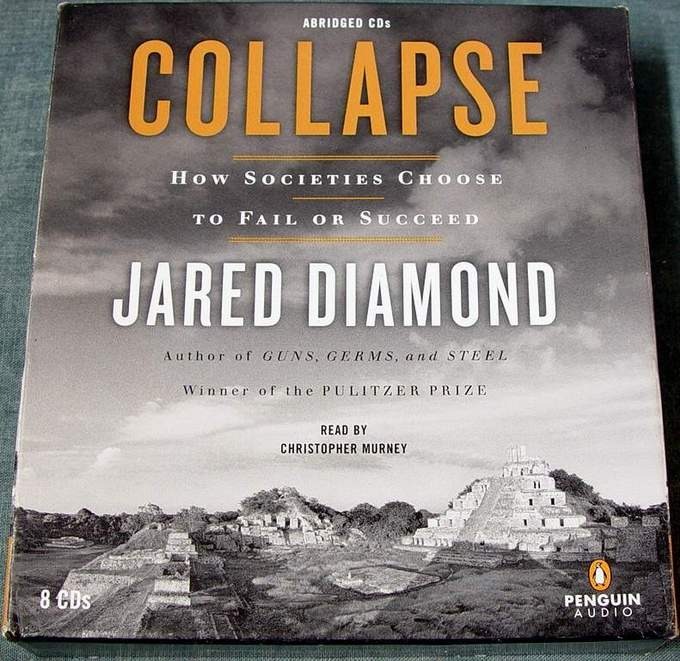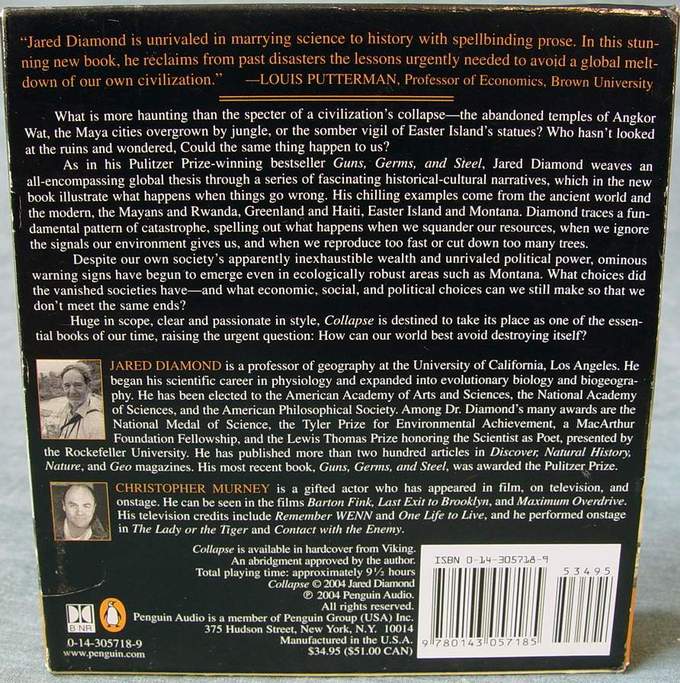|

Jared Diamond's Collapse: How Societies
Choose to Fail or Succeed is the glass-half-empty follow-up to his
Pulitzer Prize-winning Guns, Germs, and Steel. While Guns, Germs,
and Steel explained the geographic and environmental reasons why
some human populations have flourished, Collapse uses the same
factors to examine why ancient societies, including the Anasazi of
the American Southwest and the Viking colonies of Greenland, as
well as modern ones such as Rwanda, have fallen apart. Not every
collapse has an environmental origin, but an eco-meltdown is often
the main catalyst, he argues, particularly when combined with
society's response to (or disregard for) the coming disaster.
Still, right from the outset of Collapse, the author makes clear
that this is not a mere environmentalist's diatribe. He begins by
setting the book's main question in the small communities of
present-day Montana as they face a decline in living standards and
a depletion of natural resources. Once-vital mines now leak toxins
into the soil, while prion diseases infect some deer and elk and
older hydroelectric dams have become decrepit. On all these
issues, and particularly with the hot-button topic of logging and
wildfires, Diamond writes with equanimity.

|